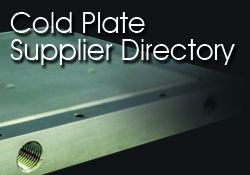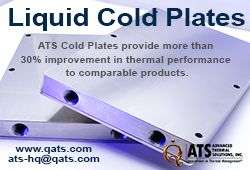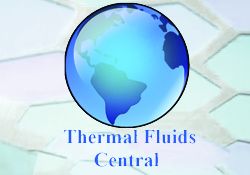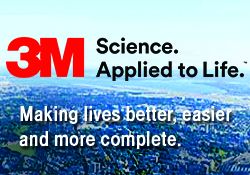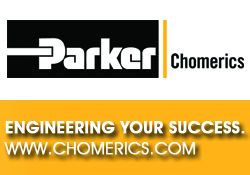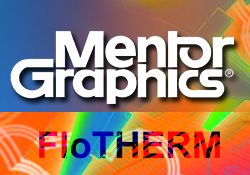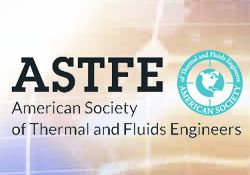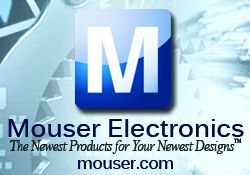11th International Business & Technology Summit
Conference Program
coolingzone 2011 is over but the proceedings are available online in video format. please visit our book store to learn more or purchase access
summit program
wednesday, october 5, 2011
|
7:30am |
registration opens/continental breakfast |
|
8:20 |
welcome |
|
8:30 |
keynote address thermal and energy management technologies for the next decade: challenges and opportunities suresh v. garimella, ph.d director, nsf cooling technologies research center school of mechanical engineering and birck nanotechnology center purdue university from health care to education to security, almost every aspect of life has benefited from the silicon revolution. integrated circuits serve as the “brains” of nearly all engineered entities that require rapid acquisition, transfer, and interpretation of information. the continued evolution of electronics for the 21st century, however, requires a fundamental shift in perspective, coupled with major technical innovations at all scales, to manage the power generated by carrier transport and dissipated in the form of heat. on the other end of the spectrum, large computing systems such as data centers are facing an energy crisis caused by this increasing power demand, which is aggravated by the cooling systems requiring levels of energy that are comparable to that consumed for computing. tens of megawatts of power consumed by data centers stress the energy supply infrastructure and cause environmental concerns as well. integrating ongoing advances at the micro- and nano-scales with system-level considerations is critical for achieving the desired performance and reliability, while at the same time supporting significant improvements in energy efficiency. approaches such as dynamic reconfiguration of computing jobs and on-demand, site-specific heat removal, supported by distributed sensing and control, are necessary. this talk will briefly review the current state of this field, and then discuss challenges and opportunities for the next decade, supported by examples of emerging solutions from work being conducted by the speaker’s group under the framework of the cooling technologies research center, a national science foundation industry/university cooperative research center (https://engineering.purdue.edu/ctrc). |
|
9:40 |
technical presentations |
|
10:50 |
challenges and innovations in avionics and military electronics thermal management jim wilson, ph.d engineering fellow, raytheon space and airborne systems mechanical analysis section manager, raytheon’s advanced product center avionic and defense electronic systems are continuing to add functionality and features resulting in thermal design engineers being tasked to devise efficient thermal management approaches with minimum weight, volume, and cost. while adding the latest high performance devices often increases dissipated heat loads, the ambient environment is still at the mercy of nature. difficulties in thermal management cause constraints on system performance, especially in harsh environments. continuing research in innovative thermal solutions is easily justified by the need to reduce system operating temperatures. challenges faced by the thermal design community in the avionics and defense industry are mostly familiar to their commercial counterparts. designing packaging for the latest high performance semiconductor is similar to the task performed in the commercial sector but complicated by requirements demanded by the avionics and defense electronics sector. these requirements include harsh environmental temperature extremes, dirty and humid air, and long operating life. this presentation will review current thermal design considerations for avionics and defense electronics and describe some of the specific concerns that must be addressed. the time required for new thermal management technology to be designed into avionics and defense electronics can be extensive. some of the reasons why this process is lengthy will be discussed.advances in thermal management for the avionics and defense industry are requiring research at the nano and micro scales. this presentation will cover some current research at these small scales. the goals of this research are ultimately more efficient thermal packaging as well as the ability to manage high heat flux levels. challenges and opportunities for innovative research related to the avionics and defense thermal management field will also be described. |
|
12:00pm |
lunch |
|
12:50 |
exhibit hall open |
|
1:25 |
technical presentations |
|
|
|
|
1:50
|
an overview of the challenges in thermal testing robert j. moffat, ph.d. president, moffat thermosciences professor, stanford university today’s engineers require skilled knowledge to effectively plan and respond to the many challenges faced in the thermal testing of electronics. in this lecture, we will focus on temperature measurements in air-cooled systems (surface and coolant) in a reasonably well-equipped lab. we will discuss the application and error characteristics of thermocouples, rtds, thermistors, ir cameras, and liquid crystals. we will then discuss how to effectively plan and execute a set of measurements that will answer the question that sent you into the lab and give you an estimate of the measurement uncertainty. in experiment planning, we will discuss the various parameters to consider, such as identifying the specific questions you are trying to answer; the degree of accuracy required; type of sensors and lab equipment available for thermal testing; and applicable budget constraints. finally, we will review specific challenges in measurement accuracy and uncertainty, including measurement errors most commonly encountered and the impact of your overall result. |
|
3:00 |
break - exhibit hall open |
|
3:20 |
challenges of thermal management and design of compact 3-d microsystems: an integrated system level approach with focus on discrete technologies ihab andre ali, ph.d. president and co-founder, deeia systems the lecture provides an overview of thermal design performance limitations and thermal management techniques covering 3-d microsystems. thermal challenges are discussed including a key thermal design parameter concerning outer skin temperature limits based on natural convection and radiation with the ambient. the lecture covers an overview on internal ic’s thermal performance enhancements utilizing advanced thermal management techniques including single- and two-phase liquid cooling. the discussion walks through an application introducing a microchannel pumped liquid cooled system for compact electronic form factors. the performance of the liquid cooled system is discussed at length and compared to conventional heat pipe based thermal architecture. tradeoffs of various system related parameters are discussed in details. system parameters included microchannel effects and pump scaling and heat exchange scaling effects. other die level parameters are considered including die silicon thinning, tim characteristics and effects of cpu heat flux non-uniformity. it is shown that while pumped liquid cooled system offers a performance increase over conventional heat pipe based architecture, system design ought to consider other important parameters for enhancing performance. these parameters include the die-to-cold plate tim performance, die thickness and heat exchanger performance. |
|
4:30 |
thermal design and management of high power leds norbert engelberts director, ats-europe light emitting diodes (led) used to have a strong presence in instrumentation and computer as visual indicator for signal integrity and device operations status. in these applications, leds were ideal since they are highly reliable, low power while requiring little to no maintenance. the latter features of leds piqued the market interest for their use not only as indicator but also as lighting devices. since illumination has become the focus, the power consumption of leds has gone up dramatically with device heat fluxes rivalling cpu and other semiconductor packages. as the result, thermal management of led applications has taken the centre stage for their successful implementation. it’s important to remember that an led is not a high temperature, filament-type light source. most leds are designed in smt (surface mount technology) or cob (chip-on-board) packages. but, while a single led is a cold and efficient light source, high-power led applications, including arrays of leds, need thermal management similar to other semiconductor devices. high temperatures not only degrade an led’s lifetime, but also results in lower light or non-uniform output – effects that can significantly affect the application in this presentation we will demonstrate the required approach for thermal management of leds that will enable the designer to select the appropriate cooling solution based on the led’s junction temperature, and not on the total power dissipation. |
|
5:30 -7:30 |
networking reception |
|
|
summit program thursday, october 6, 2011 |
|
7:30am |
registration opens/continental breakfast |
|
8:20 |
welcome |
|
8:30 |
keynote address the future of solid state lighting is bright but “why is it taking so long?” victor zaderej, m.s. manager of advanced development, molex solid state lighting group molex we have all heard about the benefits of solid state lighting (ssl), a revolutionary source of light that will dramatically reduce energy requirements, allow us to shine light onto any surface from a “rainbow” of colors, and will virtually last our entire lives. although all of these benefits are technically achievable today, we do not see them in our daily lives because either the products are not available or they are too expensive. several new technologies within the electronics, electromechanical packaging (molded interconnect device; mid), led array design, and thermal management fields along with an increase in led manufacturing capacity are quickly changing the dynamics of the industry. these new technologies and manufacturing methods and how they can be integrated into a unique and cost effective solid state light source will be discussed in depth. within the next several years, the products that will make ssl fun, easy to use, and affordable will be part of our lives. the timing of this next generation of products will nicely coincide with the end of the incandescent bulb and possibly the cfl that is currently proliferating in use on the market. |
|
9:40 |
technical presentations |
|
10:25 |
design of liquid cooled heat sinks and cold plates: some fundamental concepts for transitioning from air cooled solutions alfonso ortega, ph.d. james r. birle professor of energy technology associate dean for graduate studies and research director, laboratory for advanced thermal and fluid systems college of engineering villanova university for decades electronics thermal management has relied primarily on air-cooled solutions, but indirect liquid cooling via cold plates and liquid cooled heat sinks has become a necessary part of the potential design space as the thermal margin for air cooling vanishes. just as in the early days of air cooling, the design of liquid cooled heat sinks and cold plates has not always followed a rigorous engineering process. as liquid cooled solutions start to seriously contend for implementation, understanding their behavior will lead to better design processes, tools, and ultimately optimized solutions. this lecture will focus on understanding the basic behavior of liquid cooled heat sinks and cold plates, primarily in single phase flow, but with some attention also to two-phase flow. we will compare the various metrics that can be used to assess their performance, including the overall thermal resistance and the heat exchanger effectiveness, and we will compare the performance of liquid cooled heat sinks to air-cooled solutions using these metrics. finally, we will discuss the use of analysis tools in their design in particular to show the value of simple modeling approaches compared to full cfd approaches. |
|
11:35 |
technical presentations |
|
12:00pm |
lunch |
|
12:50 |
exhibit hall open |
|
1:25 |
technical presentations |
|
1:50 |
thermal engineering challenges at the device and microprocessor levels mehdi asheghi, ph.d. associate professor, mechanical engineering department stanford university the power distribution non-uniformities across chips results in sharp temperature gradients and multiple temperature peaks across a microprocessor or chip, which can adversely impact reliability and performance. therefore, microprocessor packaging and cooling solutions should not only consider the worst case senario but must also take into account the imapct and ramifiactions of the non-uniformities in power and temperature distributions. device and package levels thermal design and modeling cover length- and timescales that span over many many orders of magnitude. often time, the corrolation and connection between the thermal design at the device and package levels are poorly understood. the thermal cooling solutions not only impact the average chip temperature but also impact the peak temperatures and the extent of the heat spreading. this presentation implements the spatial frequency domain (sfd) analyses of heat transfer in microprocessors to establish a clear relationship between the device and packaging levels thermal design and modeling. i also report on recent advances in the thermal interface material and microprocessor cooling technologies. |
|
3:00 |
break - exhibit hall open |
|
3:20 |
thermal design of telecommunications equipment: challenges and requirements majid safavi distinguished member of technical staff, alcatel-lucent technologies alu representative at north american telecom standards, telcordia and atis thermal design of telecommunications equipment poses challenges that are unique to the industry. in addition to common electronic thermal design considerations, telecommunications equipment has to be designed to specific and more stringent mechanical, thermal, fire, efficiency, reliability requirements which are defined by the service providers, standard bodies, and regulatory agencies such as fcc. a combination of increased thermal densities and the extreme thermal operational environment of telecom equipment leave very small margins of error in the design and analysis. a slight miscalculation in the design phase could cause result in costly re-designs or termination of the project. to successfully design a new telecommunications product, thermal engineers must work closely with other disciplines throughout the design cycle to ensure that the final product will meet the requirements and pass the compliance/qualification tests. this presentation will provide an overview of the industry requirements and an evaluation of their impact on the equipment design and the cooling strategies of environments such as central offices and data centers. |
|
4:30 |
perspectives on electronics thermal management from academia to industry open panel discussion with industry leaders and prominent authorities in electronic cooling. moderated by kaveh azar, ph.d. |
|
5:30 |
conclusion of summit 2011 |
Choose category and click GO to search for thermal solutions
|
| Subscribe to Qpedia |
a subscription to qpedia monthly thermal magazine from the media partner advanced thermal solutions, inc. (ats) will give you the most comprehensive and up-to-date source of information about the thermal management of electronics
|
| Submit Article |
if you have a technical article, and would like it to be published on coolingzone
please send your article in word format to [email protected] or upload it here
|
| Subscribe to coolingZONE |
|
| Submit Press Release |
if you have a press release and would like it to be published on coolingzone please upload your pr here
|
| Member Login |
| Supplier's Directory |
|
||
|
| Media Partner, Qpedia |
|
| Heat Transfer Calculators |





